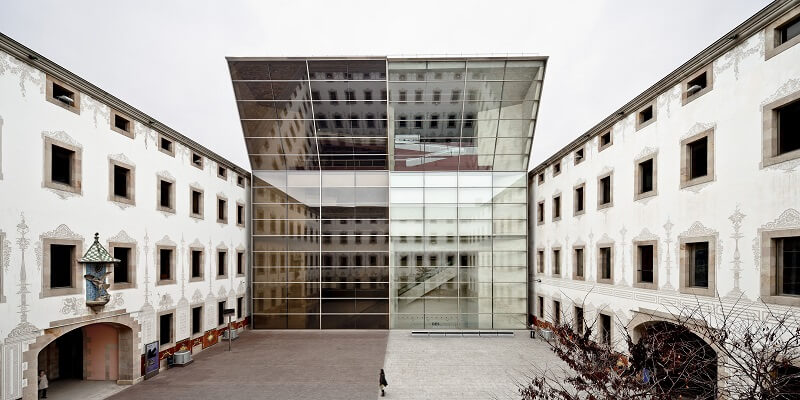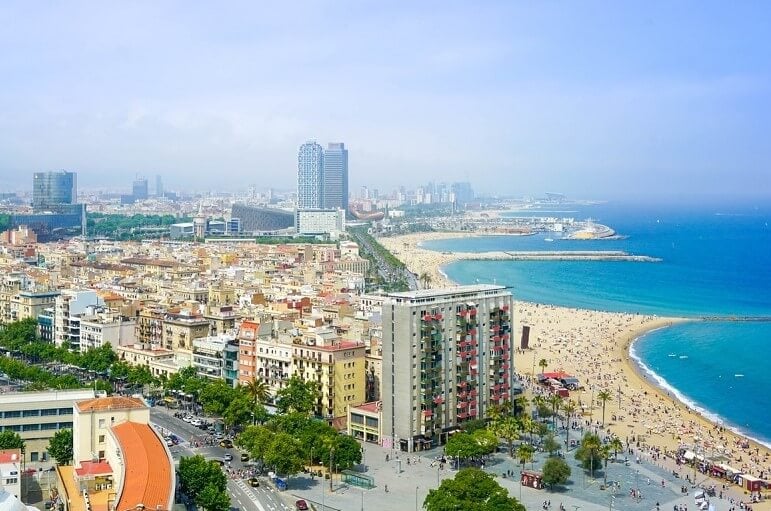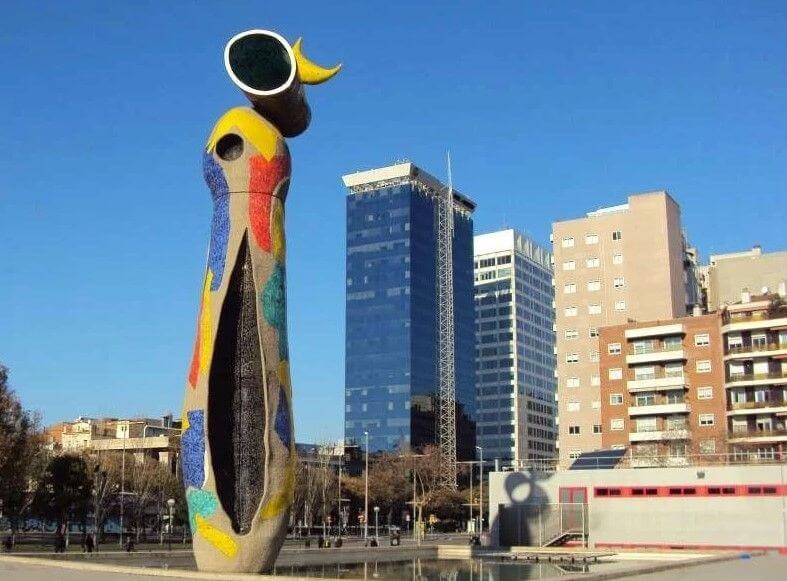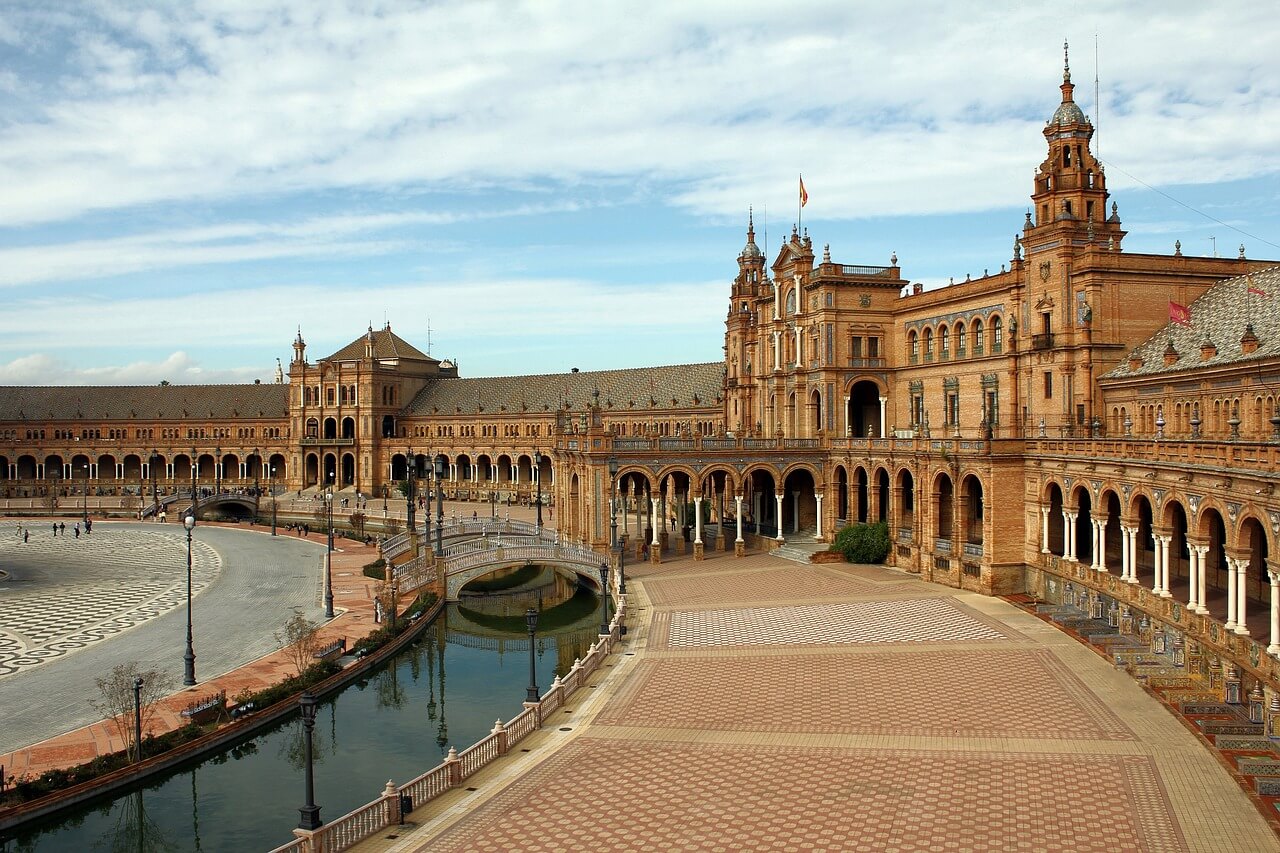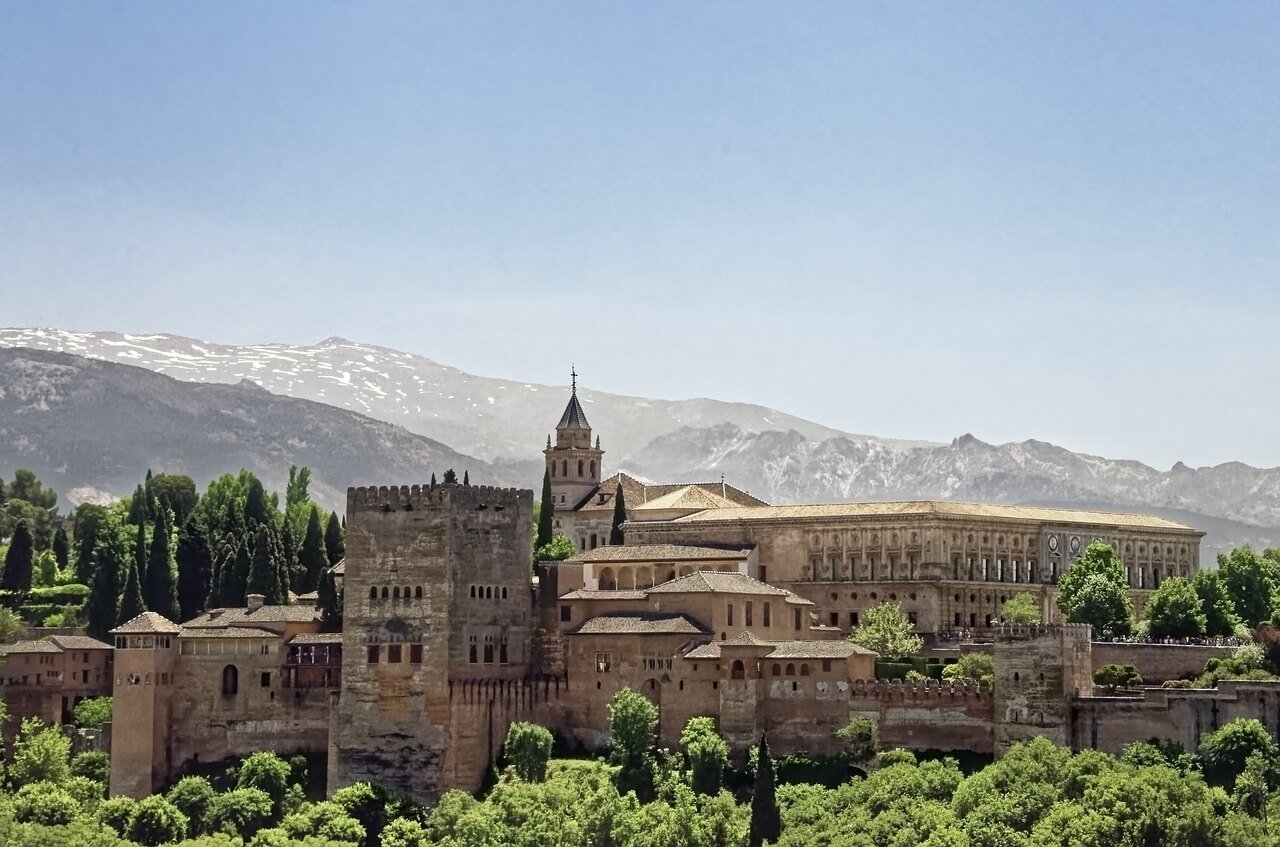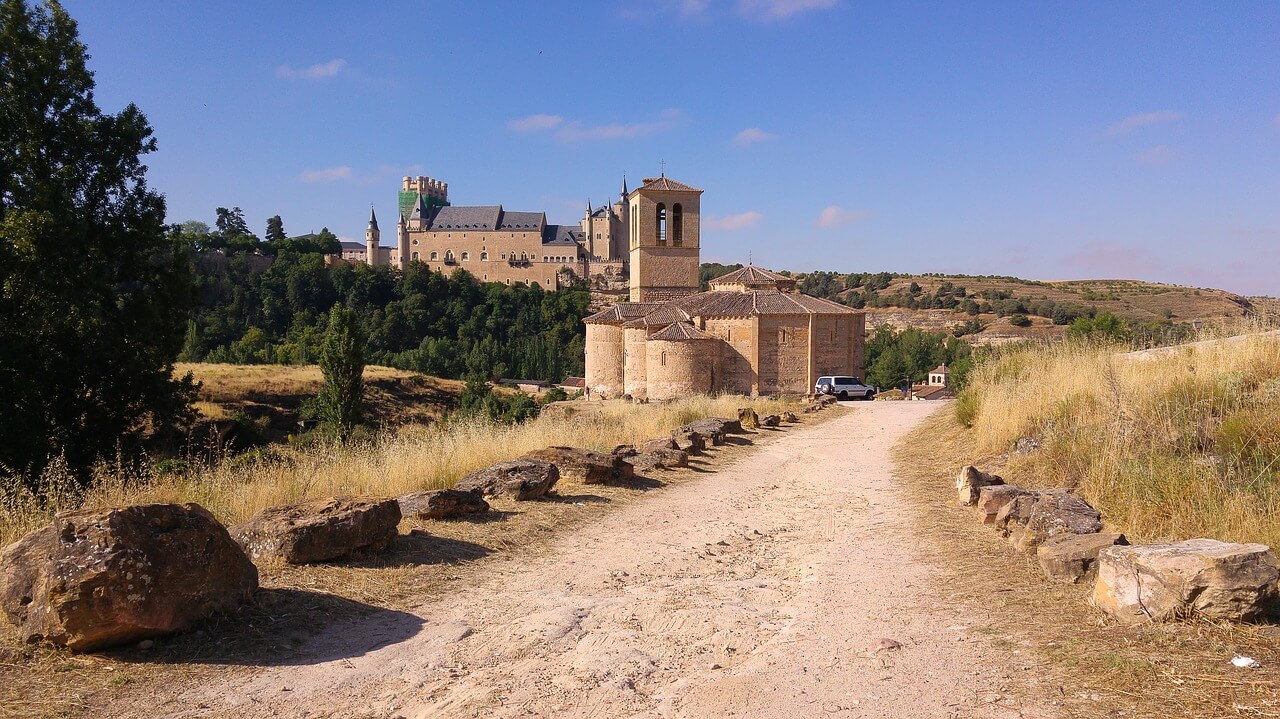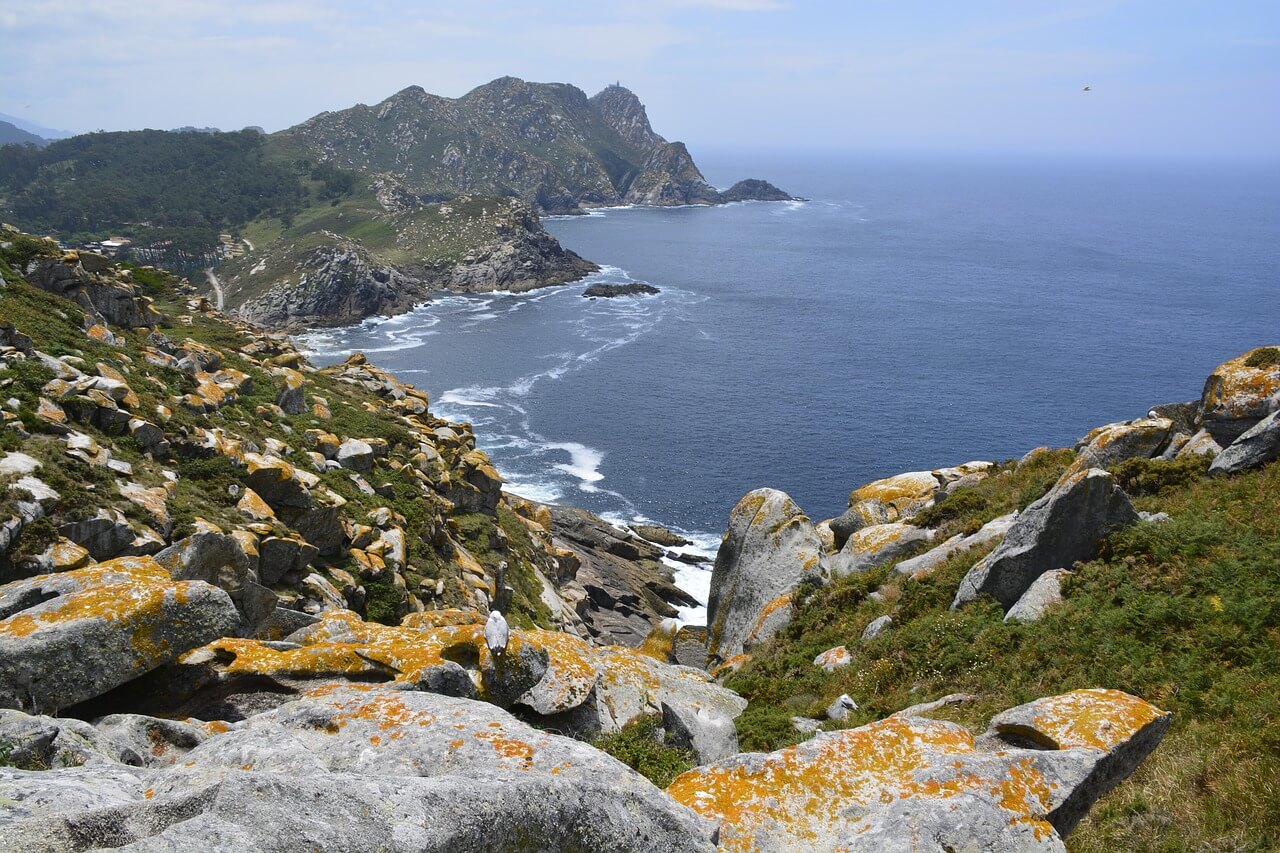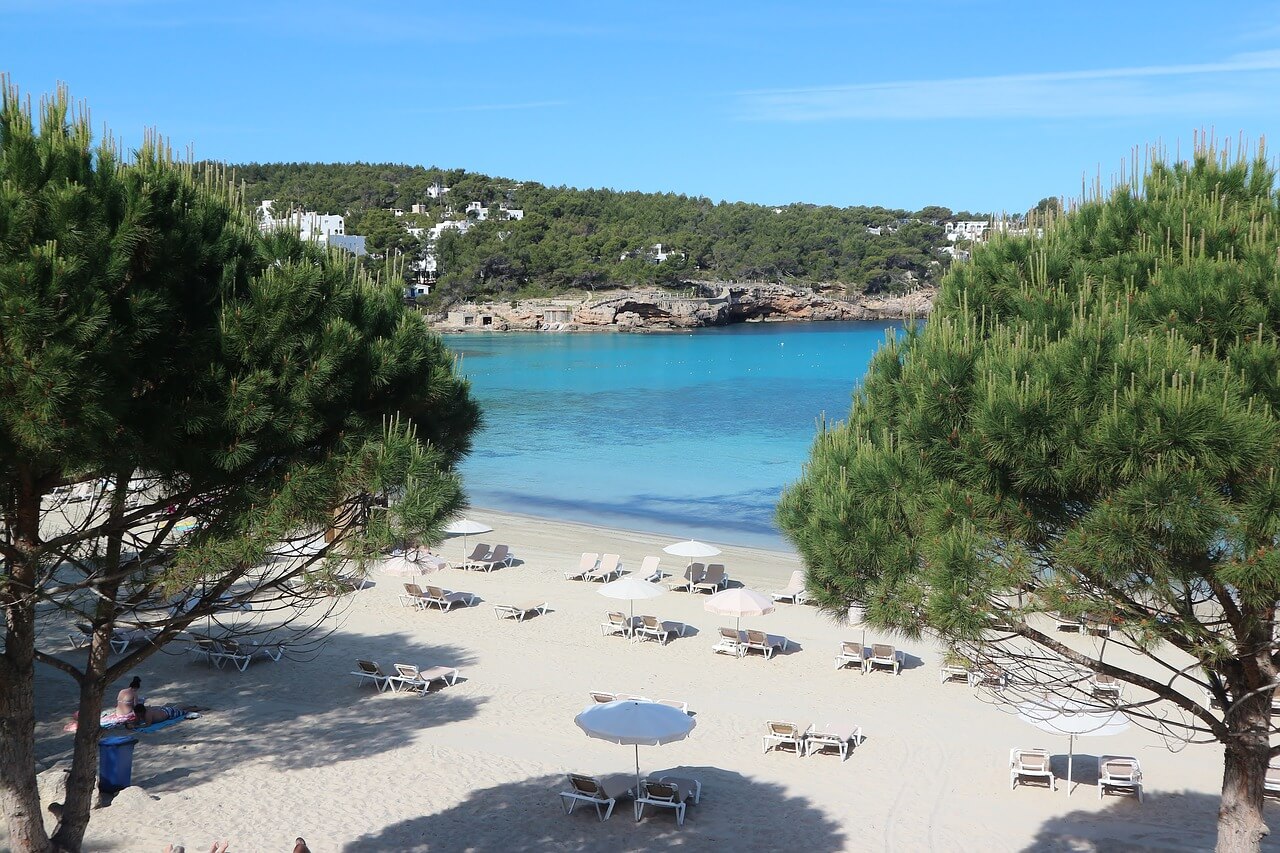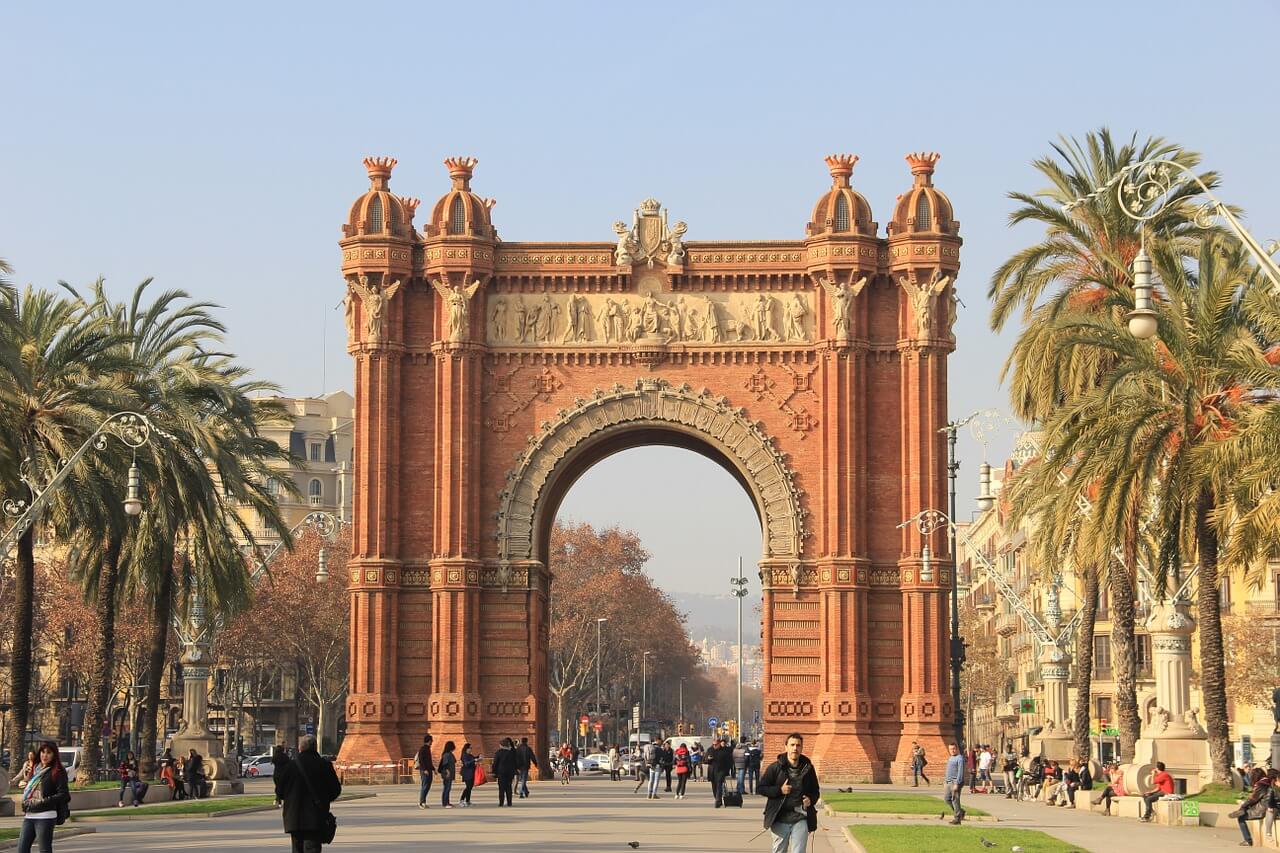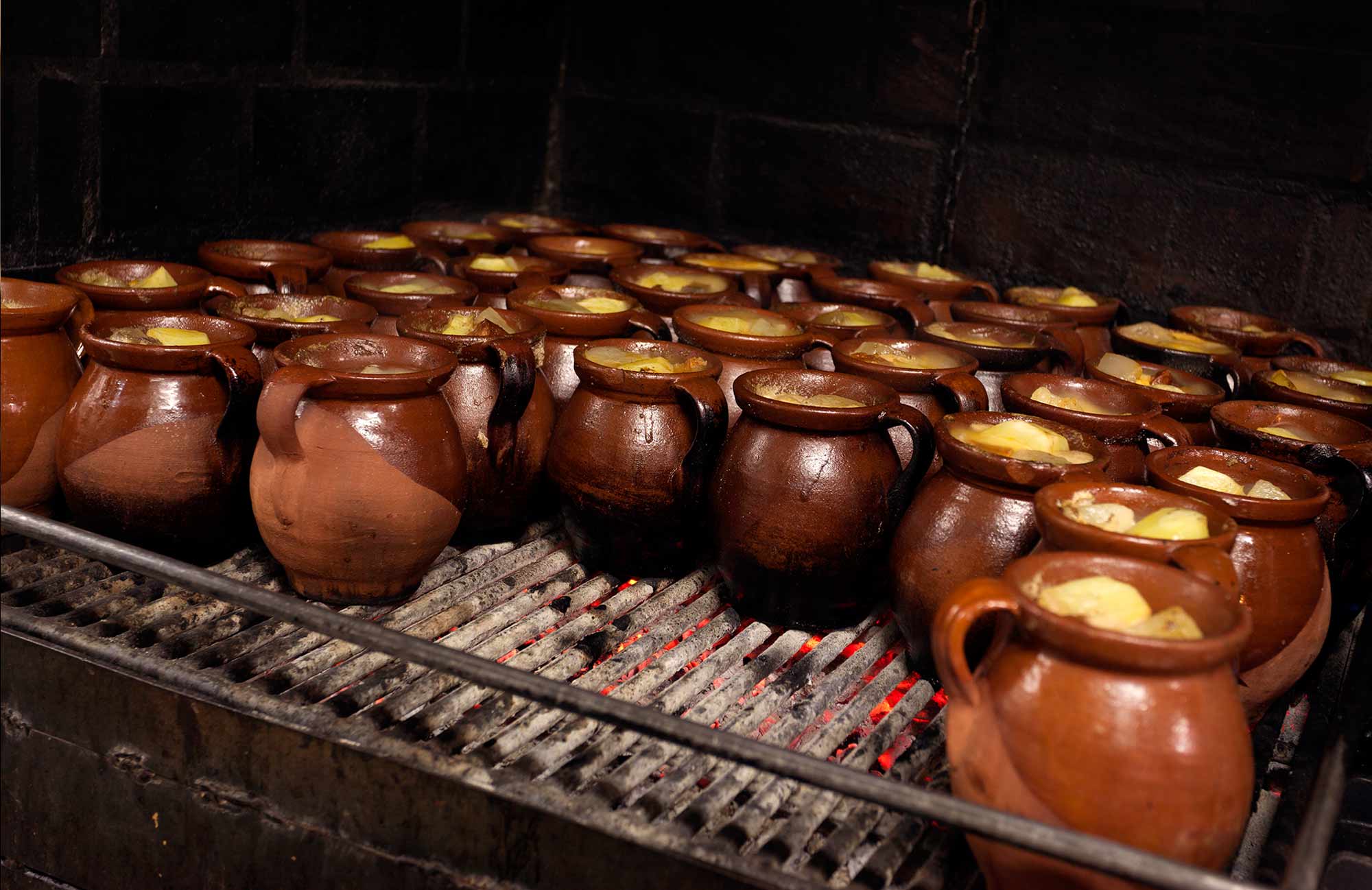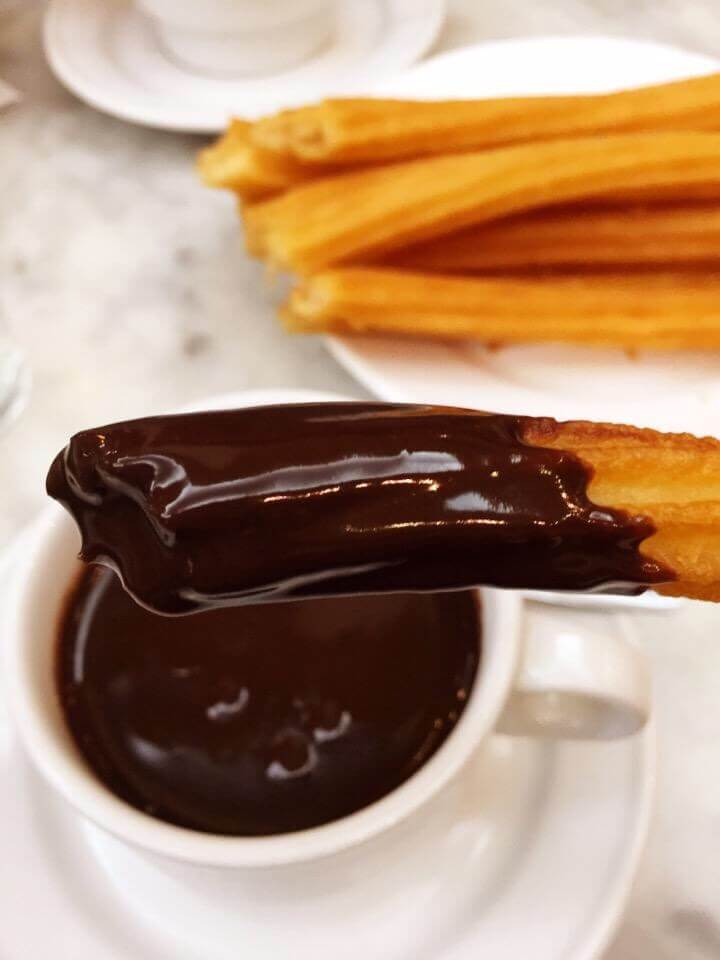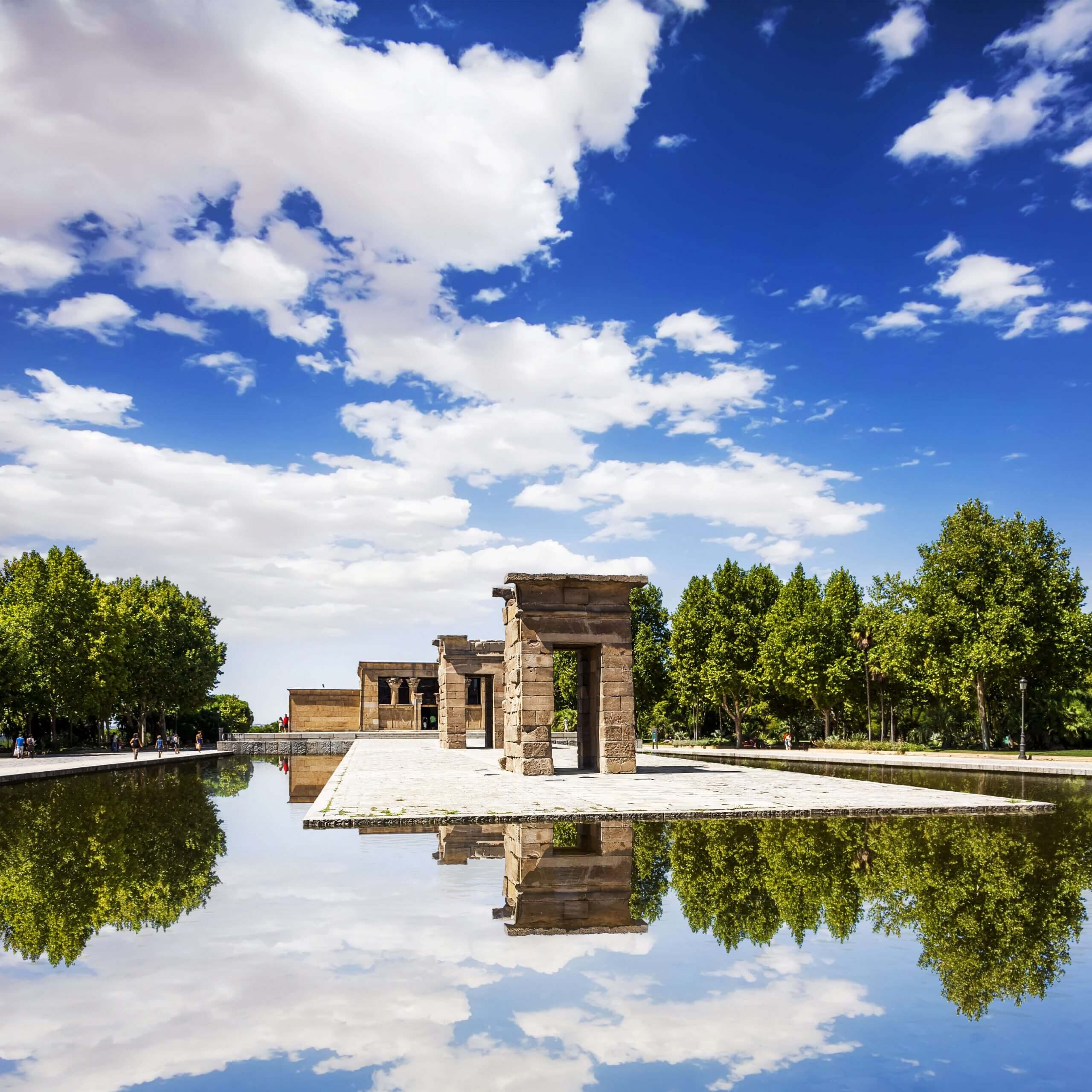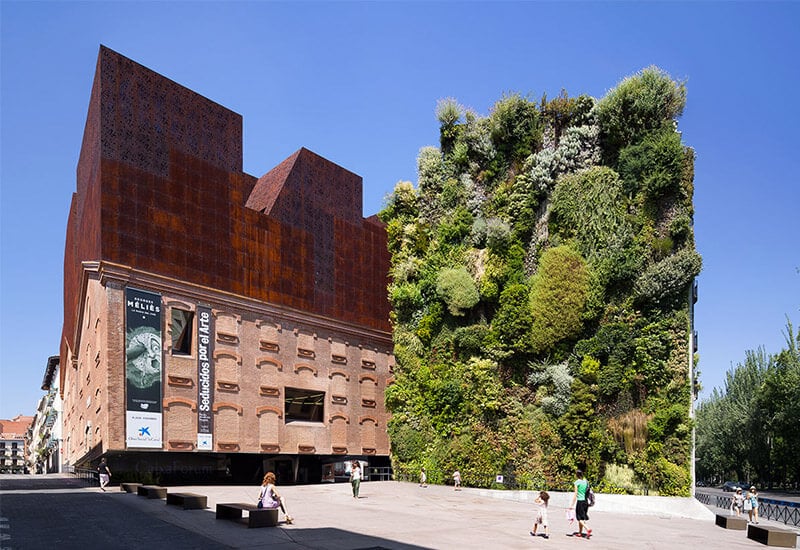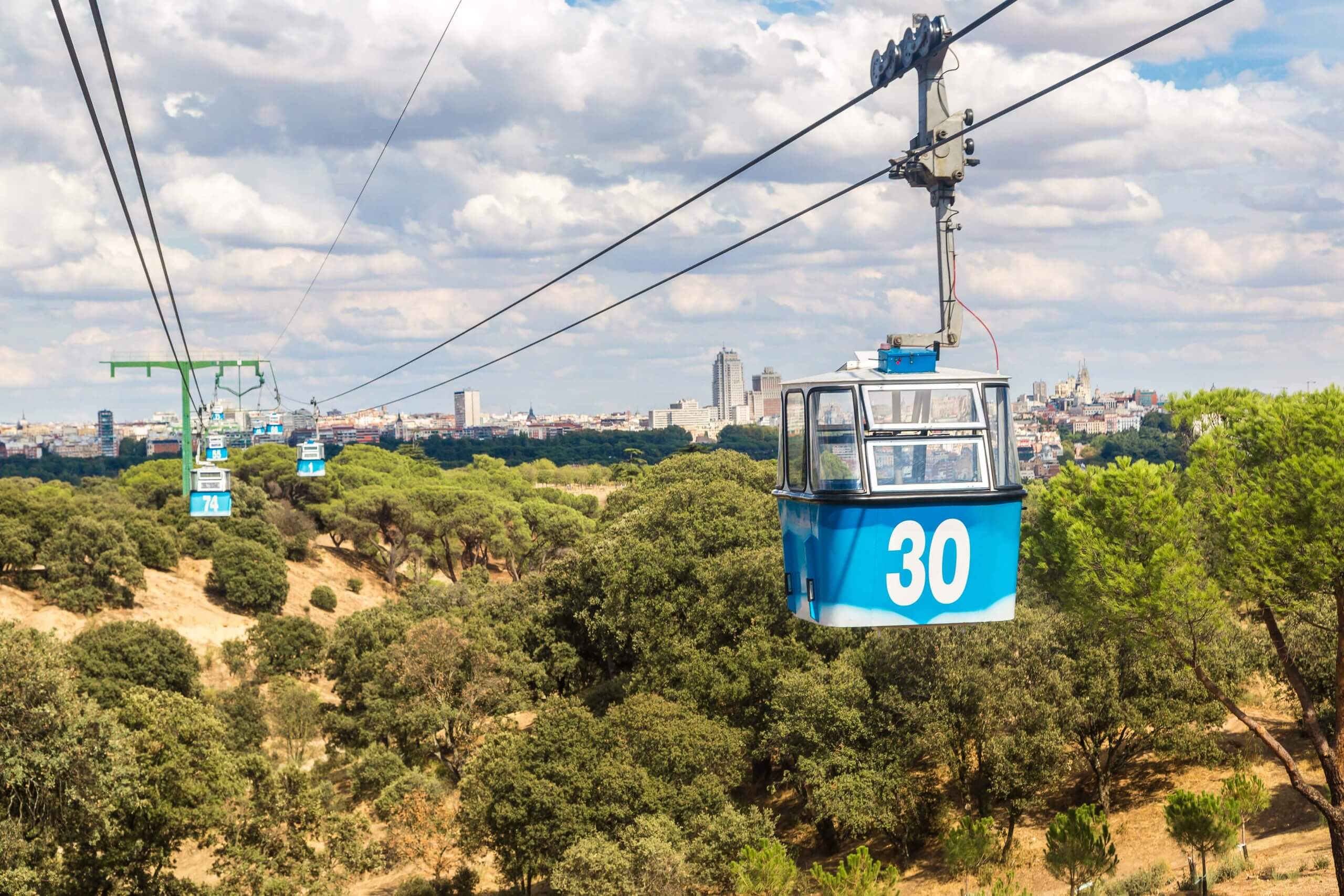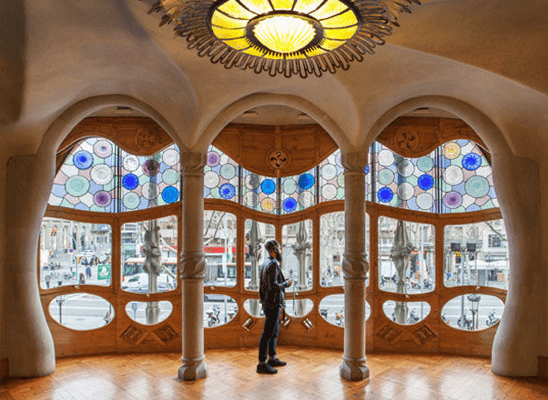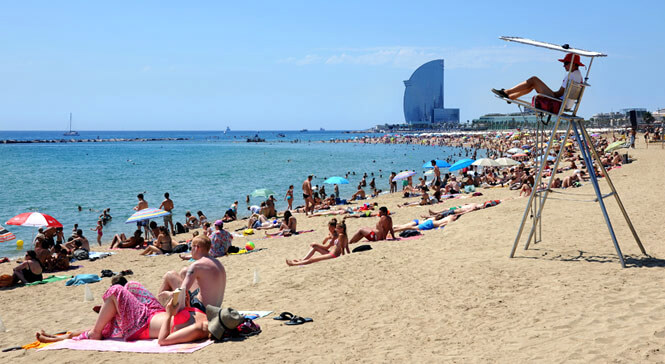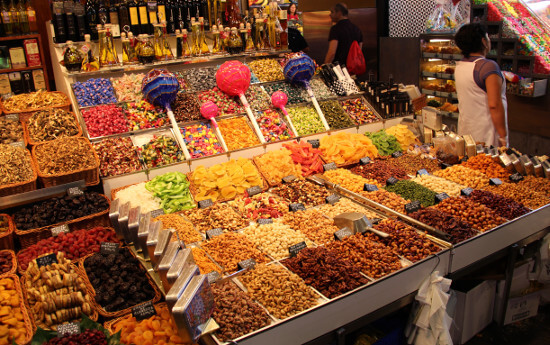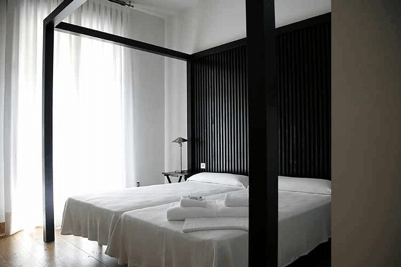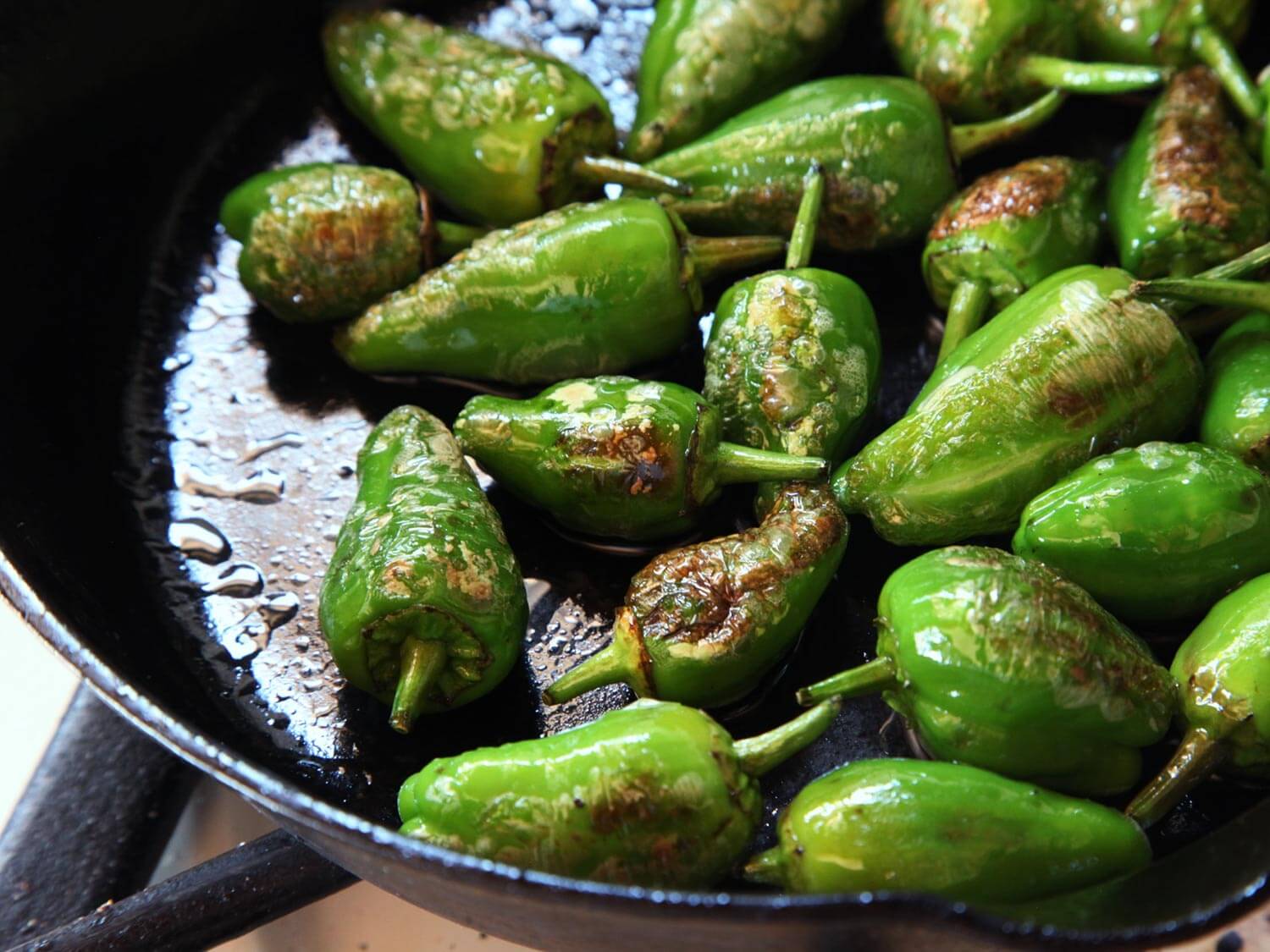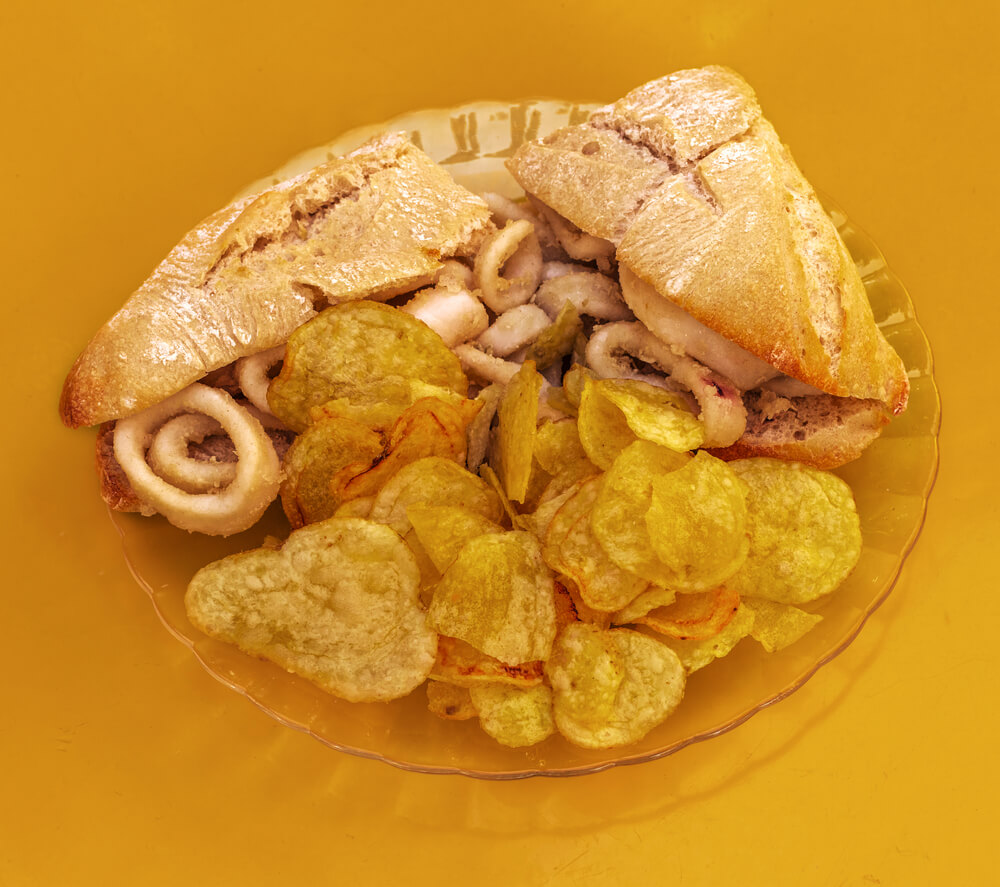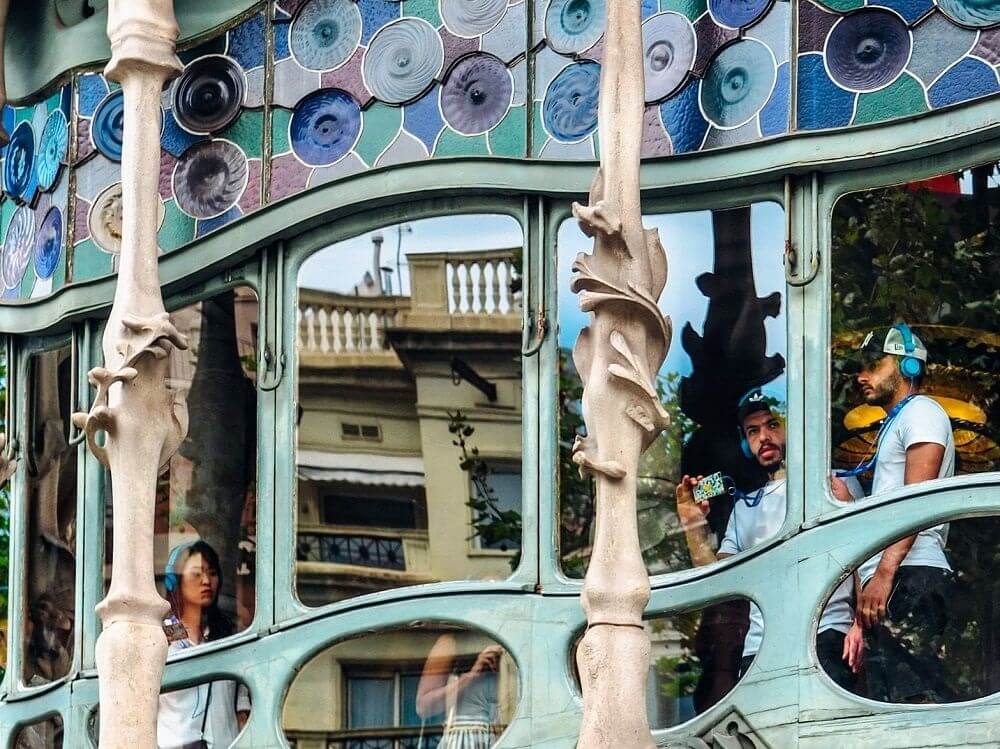
Barcelona’s appeal as a laid-back beachside city brimming with architectural elegance and easygoing charm is now well documented. From its Modernist masterpieces to its thriving bar and restaurant scene, and its location on the Mediterranean coast, the city is hard not to fall in love with.
But where exactly in Barcelona should you stay? Whether you’re on a weekend anniversary break with your loved one or a ten day exploration of Catalonia’s finest cultural offerings, here’s our run-down of the city’s neighbourhoods and what makes each one special.
For history, romance, and atmosphere, look no further than the ancient Barri Gòtic. Home to the remains of Roman Barcelona, this central neighbourhood is full of evocative neo-Gothic architecture. Think winding streets, archways and peeling wooden shutters. Check out the gloomy Gothic grandeur of the cathedral with its many gargoyles and great views of the Old City from the roof. Get your fill of ornate churches with the Basilica de Santa Maria del Pi, and the Basilica dels Sants Just i Pastor. Find a seat under a palm tree in Plaça Reial. Stroll down Las Ramblas or head to La Boqueria with its fresh food stalls. This neighbourhood hums with activity in the daytime but is quiet at night, making it ideal for those wanting to get a daily dose of culture, retire early to bed, and make the most of the following day.
Barcelona Cathedral in the Barri Gòtic
Take a trip back to medieval Spain with a stay in the Barri Gòtic. TripExpert recommends staying at Hotel Neri Relais & Chateaux, which Star Service says is, ‘eclectic, elegant and blessed with one of the better dining rooms in the neighborhood.’
This former red light district has grown into a lively and dynamic neighbourhood. Here you’ll find the Museu d’Art Contemporani de Barcelona, the city’s main modern art gallery, also a popular spot for skateboarders. There’s also the Filmoteca and the Centre de la Cultura Contemporania, making El Raval a fabulous neighborhood for art lovers. Rapidly gentrifying, El Raval also has some great little boutiques as well as Indian and Pakistani-run markets, contributing to its bohemian and multicultural vibe. Make sure to visit Gaudí’s Palau Güell, a whimsical mansion that is over 100 years old, and catch a show at the Gran Teatre del Liceu.
Center of Contemporary Culture, Barcelona
Find out why Barcelona is considered one of Europe’s hottest cities of culture with a stay in diverse El Raval. TripExpert recommends Hotel 1898. Fodor’s says, ‘Overlooking La Rambla, this imposing mansion, once the headquarters of the Compañiá General de Tabacos de Filipinas, couldn’t be better located.’ There’s also the futuristic Barceló Raval, ‘A hip Barcelona sleep near La Rambla with a rooftop bar and pool and panoramic city views’, according to Jetsetter.
Like the Barri Gòtic, El Born is full of medieval relics. And like El Raval, it has a trendy buzz. What really sets El Born part from the other two neighbourhoods are its relaxed plazas and lovely parks, which include the charming Ciutadella Park, 280,000 square meters of peace, palm trees, and parrots. Rent a rowing boat here, or pay a visit to Barcelona Zoo. Don’t miss Santa Caterina market, a great alternative to the crowded La Boqueria. Art aficionados will want to make a stop at the Picasso Museum. Less high-brow but highly entertaining is the Museu de Xocolata – it’s hard not to like a museum devoted to chocolate. When night falls, head out on an exploration of this neighbourhood’s buzzing restaurant scene. Don’t be confused if you hear this area referred to as La Ribera. It’s original name was actually Sant Pere, Santa Caterina i La Ribera.
For historic architecture, edgy shops, and a cool vibe, El Born fits the bill. TripExpert recommends staying at Grand Hotel Central, which CN Traveller describes as, ‘hip without the attitude.’
Much of Barcelona’s charm lies in its seaside location, and so staying close to its sandy shores is an appealing choice. If you’re after easy breezy beachside living, the old fishermen’s neighbourhood of La Barceloneta is ideal. This area has a lovely village-like vibe and a laid-back atmosphere. Stroll the old centre with its small distinctive houses, narrow balconies, and blue and yellow flags – the ancient heraldic symbols of the neighbourhood.
Enjoy good seafood, go for morning jogs along the Passeig Marítim promenade, and kick back with a beer and watch gorgeous sunsets over the ocean. Kids will love visiting L’Aquarium de Barcelona, one of the biggest in Europe. You’ll also find an IMAX movie theatre in this neighbourhood – in the unlikely event of rain. And, of course, there are four different beaches to choose from. At the beach of Sant Sebastià you can take a cable car up to an observation platform near the Miramar hotel. Then there’s the beach of Barceloneta, the beach of Sant Miquel with its L’Estel Ferit sculpture, and lastly, the beach of Somorrostro.
La Barceloneta, Barcelona
If you feel happiest sunkissed and with sand between your toes, La Barceloneta is the neighbourhood for you. TripExpert recommends staying in WBarcelona. Lonely Planet says the rooms and suites are, ‘the last word in contemporary hotel chic.’
Barcelona is famous for its Modernist architecture. For those who want to explore what makes these buildings so unique and worthy of their UNESCO status, a stay in La Dreta de L’Eixample is ideal. Located on the right of Passeig de Gràcia, the area is home to Gaudí’s La Pedrera and the iconic Sagrada Família, a magical reinvention of the traditional Gothic cathedral. Pay a visit to the Illa de la Discòrdia for a full-on pageant of Modernism with five creations by the three leading architects of the day: Casa Batlló by Antoni Gaudí, Casa Lleó Morera by Domènech i Muntaner and Puig i Cadafalch’s Casa Amatller . You’ll even find Modernist grocery shops and pharmacies in this neighbourhood. This is a wealthy and upscale area, deserving of its nickname, ‘Quadrat d’or’, or ‘The Golden Grid.’ Peruse the shops along Passeig de Gràcia or relax in a bar on Passeig de Sant Joan.
Casa Batlló, Passeig de Gràcia
If you fancy escaping the tourists and traffic of central Barcelona for somewhere authentic, there’s no better place than Gràcia, with it’s arty and alternative vibe and proudly independent spirit. You’ll find chic boutiques, great restaurants, and even a few Modernist buildings, including Hotel Casa Fuster and Casa Vicens. Most significantly, however, this neighbourhood is home to Parc Güell, a Modernist wonderland with a mosaic dragon and Hänsel and Gretel-inspired gatehouses. Enjoy this neighbourhood’s slower pace, taking the time to enjoy a beer in one of the many peaceful plazas such as Plaça de la Vila de Gràcia or Plaça del Sol. Time your visit to coincide with the Festa Major de Gràcia to experience street decorations, fireworks, and parades.
Live like a local in lovely Gràcia. TripExpert recommends staying at Casa Fuster. According to Frommer’s, the hotel, ‘blends sheer luxury with first-rate state-of-the-art amenities.’
L’Esquerra de l’Eixample and Sant Antoni
To the left of the Passeig de Gràcia, you’ll find Eixample Esquerra, an affluent neighbourhood with an intellectual edge thanks to its proximity to multiple university campuses. Head to Parc Joan Miró, also known as the Parc de l’Escorxador, with its pines, pergolas, and statue by Joan Miró called the Dona i Ocell – or Woman and Bird. Catch a concert in the University of Barcelona gardens or explore the up-and-coming area of Sant Antoni, a bohemian corner of the city full of young urban creatives, edgy street art, and a vibrant bar and restaurant scene. There’s also a beautiful market of the same name.
Enjoy all the perks of the city-centre without the crowds in charming Esquerra Eixample. TripExpert recommends Hotel Cram which, CN Traveller writes, ‘isn’t crammed with anything except a very cool Barcelona crowd.’
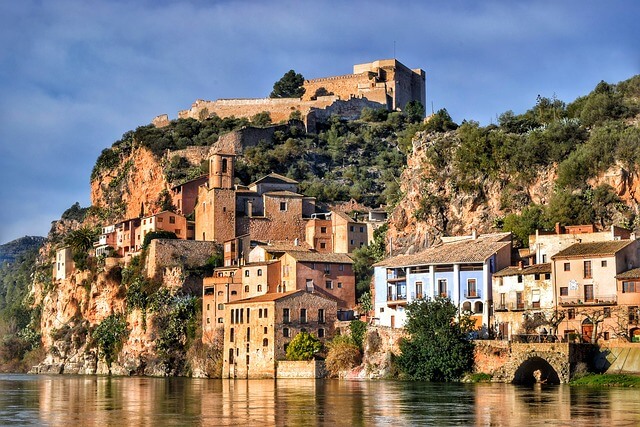
French is the language of love, Italians are renowned for their passion, and Germany is home to fairytale towns and castles. But what of Spain? A land of fiestas and flamenco, tapas and rich traditions, Spain has its fair share of places sure to win over loved-up couples. With its endless sunshine, dramatic landscapes, intriguing history, and some of the best cuisine in the world, Spain offers a true recipe for romance. Whether you’re after intimacy and seclusion in a natural paradise or nightlife that promises to get pulses racing, here are TripExpert’s picks for the most romantic destinations in Spain.
Seville was voted by Lonely Planet as 2018’s top city to visit and it’s easy to see why. The very definition of sultry, Seville is a city of picturesque plazas, aristocratic mansions, narrow winding alleys, and 25,000 orange trees. Visit the enormous Gothic cathedral or catch a flamenco performance for which Seville is famous. Take a horse and carriage ride around the city – the best way to see the sights. Or take in the spectacular Plaza de España adrift a rowing boat. Enjoy sunsets and champagne from one of the many rooftop bars. Explore magnificent churches, and, of course, the city’s Alcázar, with its Arab-inspired gardens. Wander Triana, home to authentic and characterful tapas bars. And make sure to pay a visit to Monte Gurugú, where, legend has it, a kiss with your partner guarantees your love will survive anything.
TripExpert recommended hotels
TripExpert recommended restaurants
Another of Andalusia’s many gems, Granada is most famous for the Alhambra. But the allure of this iconic city goes beyond its sensational palace. Here ancient Islamic architecture sits alongside contemporary art, bohemian cafes are packed with students, and the scent of spices hangs in the air – another clue to the city’s Moorish legacy. Wander streets of whitewashed houses and orange trees. Relax with a fragrant tea in a tetería in the Albayzín. Enjoy meals on secluded terraces, or the peace and quiet of the Carmen de los Martires; at the centre is a small turret surely designed for a romantic rendezvous. Explore the white and blue caves of Sacromonte, home to the city’s best flamenco and with exceptional views of the Alhambra. Best to head there at sunset when the walls of the palace slowly turn a dreamy shade of pink.
TripExpert recommended hotels
TripExpert recommended restaurants
Fairytales are essentially manuals for romance so what could be a more idyllic than a city home to its very own fairytale castle? Segovia, a true medieval masterpiece, is situated just 30 minutes on the train from Madrid and has just as much to tempt honeymooners as the Spanish capital. It’s said that Cinderella’s castle was inspired by the city’s own – and it’s hard not to be captivated by this turreted architectural wonder. But Segovia also has a UNESCO-listed Old Town, an ancient aqueduct, as well as a majestic cathedral. Wander the riverfront promenade and feel yourself whisked back in time as you explore Romanesque churches full of intricate carvings. The city also has a lively creative scene so be sure to catch a concert or exhibition to accompany all that history. Try the cochinillo, or roasted suckling pig – Segovia’s speciality – best enjoyed with a good glass of red wine. And the best time to visit the city? Christmas. Although you’ll miss out on that famous Spanish sun, you’ll experience the dreamy white wonderland that is Segovia in winter, turrets dusted with snow and photo opportunities aplenty.
For a slightly different side to Spain, Galicia is your rugged, remote, and truly gorgeous alternative. With its Celtic connections, untamed beaches, lush green valleys, and spectacular seafood, this little-visited corner of northwest Spain is known as terra de meigas, or ‘land of witches.’ And it is indeed an enchanting place, whose landscape – more like Scotland than Spain – is perfect for those seeking a romantic refuge. For history, visit Santiago de Compostela, an internationally famous pilgrimage spot. Head to Sanxenxo for sand and surf: the area boasts the highest number of European blue flag beaches in Spain. For luxury and pampering, Illa de A Toxa has you covered with its thermal waters and luxury hotels and spas. For legend and myth, there’s Finisterre, or ‘Land’s End’, believed for a long time to be the most westerly point of Europe. And for food and drink, be sure to sample oysters, nature’s most famous aphrodisiac, in Vigo, and head to Barqueiro for albariño, Galicia’s most famous grape varietal.
Mallorca, Balearic Islands
Mallorca, Balearic Islands
Mallorca, the largest island in the Balearics, has long topped summer holiday destination charts. A favourite among those seeking sun, sand, and sea, with its picture-postcard good looks, it’s certainly no secret. While in the 1970s, few considered Mallorca a contender in the luxury travel market, today it’s becoming an increasingly glamorous destination. And, from the wild Serra de Tramuntana mountain range to the boundary-pushing contemporary cuisine in hip Palma, it offers a perfect romantic escape. In the west, azure seas and majestic cliffs. In the mountainous north, pine-tree framed bays. In the east, wild beaches. And in the southern flatlands, olive groves and sun-bleached sands. Although the island is popular, you can still find seclusion – including gorgeous rural retreats in the form of old manor houses and fincas. Candlelit dining, cliff-top views, and a seafood platter for two – Mallorca is a laid-back getaway made for lovers.
Ibiza. The party island, yes. But also an island whose gorgeous coastline, elegant boutique hotels, and hamlets hidden away among pine forests, create a cocktail sure to inspire romance. An island whose reputation for bohemian hedonism began with the Beatniks in the 1950s, and, today, indisputably a clubbing mecca. But it’s not hard to discover its quiet and authentic side. Historic architecture, memorable cuisine, and a blissful peace and quiet await visitors who venture away from the main resorts of Playa d’en Bossa or San Antonia. There’s the World Heritage-listed Dalt Vila in Ibiza Town, with its white-washed houses and flea markets. Or upscale Santa Gertrudis with its boho-glam vibe. And around the shoreline a plethora of remote cove beaches, many deserted. The island is also a walking utopia, and is making its mark on the wellness scene too with retreats and health-food cafes popping up all over.
TripExpert recommended hotels
TripExpert recommended restaurants
No list of Spanish destinations would be complete without mentioning the country’s seaside megastar, Barcelona. This cultural showstopper, with its whimsical Modernist creations, Gothic cathedrals, and countless museums, has much to tempt any traveller. But for honeymooners, Barcelona comes out top. Sun-drenched beaches, an acclaimed drinking and dining scene, and too many galleries to keep count, culture vultures after a little romance should head to Catalonia’s capital. Work your way through Gaudí’s masterpieces or perhaps catch a concert at the Palau de la Música concert hall. For views to make hearts soar, climb the Monument a Colom. Or take to the water on a stand-up paddle-board or cruise. If you want more outdoor activity, the Collserola hills are perfect for hiking and biking. And as the sun falls, perhaps catch an open-air film at the Centre de Cultura Contemporània de Barcelona. Feast on paella on a terrace overlooking the sea, then drink away the evening at a shorefront chiringuito. For a romantic getaway that also keeps it cultural, Barcelona is a sure-fin win.
TripExpert recommended hotels
TripExpert recommended restaurants

Madrid is the city that never sleeps — that is unless you catch her between the hours of 2-6pm. A stillness falls on the city as shop doors roll down and workers head to their favorite bar or tavern to grab a bite before indulging in a few moments rest.
Follow their lead and recharge during these hours so you will have the stamina to join in “la marcha” of the night. Of course, that doesn’t mean heading back to your hotel to sleep — Spaniards of late are shunning the actual sleeping during siesta and taking advantage of this time as an elongated social hour.
Spain, and Madrid in particular, operates in a seasonal way. During the summertime, the Siesta means thousands of people loitering in plazas wherever shade can be sought. Spring and autumn draw people from their homes, you’ll find locals basking in every moment of the sunshine possible; it’s not unusual to see benches full from morning to night. Winter is a strange beast in Madrid, some days will be brutally cold and siesta hour will leave the streets empty and the cafes full.
To be sure you’re covered no matter the season there are plenty of indoor and outdoor options on this list. Do like the locals and let the weather be your guide!
In summer, pick a plaza and join the crowds
Tinto de verano, half red wine and half sparkling lemonade
Terrazas, terraces, begin to swell with crowds right around 2 in the afternoon, and tables fill with drink after drink. During the summer months, this is the perfect time to take a tinto de verano, a wine spritzer that you will actually find locals drinking — unlike sangria which is pushed onto tourists. For beer drinkers order up a shandy or clara which is half-beer and half-lemonade. It’s refreshing and hydrating at the same time. This is the secret to how the Spanish keep going all day and night, their daytime drinks are not completely alcoholic!
Winter means bigger meals and delicious dessert
La Bola is known for their cocido Madrileño, a hearty stew perfect for winter
Though it might not be terraza season there are still plenty of cozy restaurants to duck into and take shelter from the elements. La Bola is an old favorite for their cocido Madrileño, the local stew. Vegetarians and vegans take refuge in Plaza de la Paja which is home to several cruelty-free restaurants or in Pura Vida Vegan Bar near Plaza Cebada.
No matter how your wintertime siesta begins, there’s one thing many can agree on: finishing with a rich dessert. During the winter months, many people take the chance to indulge in churros and hot chocolate to keep the cold at bay. There’s no place more famous than San Ginés, found tucked off Calle Arsenal, just around the corner from the iconic nightclub Joy Eslava. If you’re hoping to find a place that’s a little less known then walk just a few more minutes to Confitería El Riojano. Their drinking chocolate is lighter and the selection of pastries is more varied than most chocolaterías who only offer churros or porras.
Churros with hot chocolate from Chocolatería San Ginés
Take a rest in a park, garden, or holy place
The Debod Temple, an ancient structure reconstructed in Spain after being gifted by the Egyptian government
After the long and lingering lunch time meal, it’s customary to take a walk to the nearest open park and close your eyes for a few moments if the weather permits. While the Retiro is arguably the most famous of all the parks in Madrid it’s also worth walking the extra mile past the Royal Palace to arrive in the shady Templo de Debod park which offers one of the nicest sunsets in Madrid.
Plaza de Oriente lays at the feet of the Royal Palace and the statue strewn gardens play host to many local musicians and painters. Grab a spot on one of the benches, enjoy the music, and drift off. It should go without saying, but be certain you’ve put your valuables into your front pocket as Madrid has one of the highest pickpocketing rates in the world.
Almudena Cathedral, to the left of the Royal Palace, also makes a good place to have a few moments of stillness in the Madrid afternoon. The colorful vaulted ceilings, stained glass, and the decorum of visitors make it a very tranquil place to sit for a while and take it all in. As there’s no entry fee charged at the time of writing, it’s also a good place for those on a budget to enjoy.
Make for the museums and get your cultural fix
If some shut-eye isn’t on your list then make for one of Madrid’s many museums. The CaixaForum is always a good choice, and their location at Paseo del Prado 36 makes it an enjoyable walk from anywhere in the downtown area. The exterior of the building is covered in flowing green plants and is worth a few moments. After paying a modest admission free you’ll find a bookshop, cafe, and over 600 objects on permanent display in addition to the rotating themes. My personal favorite was the sneak peeks at Pixar animation studios unreleased short films as well as the labor of love that went into each animated classic.
For a more central option, the Telefónica Building also has wonderful displays and four floors to choose from. Their rotating exhibitions include everything from massive wind-powered sculptures to director Alfred Hitchcock’s life and have even included temporary virtual reality displays. Tickets are not needed for most events, you can just walk into the building which is easily found where the Gran Via meets Calle Fuencarral.
A winter sightseeing option
In winter the sun sets much earlier, just before 6 in the evening in December, and taking a ride on the Teleférico during sunset is one of the more romantic and charming views of Madrid possible. If you plan to take a one-way ride be aware that it’s a 20-minute walk through the Casa de Campo to the nearest metro station (also named Casa de Campo) so you’ll want to bring a flashlight with you. A return trip will land you back at the same spot after dark, just in time for the mid-evening snack of merienda. This is typically taken anywhere between 6 to 8 depending on the season and your schedule. For this, you’ll just show up at a tapas bar, order your drink of choice and enjoy a tapa or two before thinking of dinner plans.
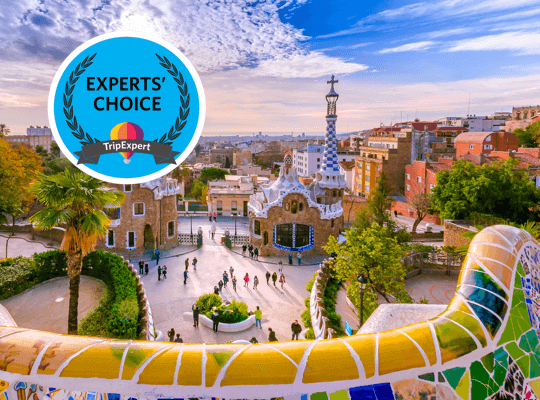
Our Experts’ Choice awards are are based on recommendations from leading travel media. Winners are determined by taking into account placement in published “best of 2018” lists, as well as the quantity and quality of reviews for hotels, restaurants and attractions. We’re pleased to announce that the winner of this year’s award for best budget destination is
Barcelona.
Don’t let the fear of a European price tag deter you from this year’s best budget destination, Barcelona, because, as Marie Claire so accurately proclaims, “what makes the Catalan City ‘special’ doesn’t cost a penny.” Featured on Forbes’ Best Budget Travel Destinations For 2018 and The New York Times’ Bargain Destinations for 2018, Barcelona is home to a vibrant and unique culture while remaining “among the more affordable cities in Europe.”
Iconic Gaudí architecture, free museum days, public beaches, and donation-based walking tours are just some of the easily accessible attractions our experts’ highlight. Refinery29 notes that admission to “many of the site’s most famous landmarks are under 10 Euros.” Entry to Parc Guëll, which Budget Travel describes as “a sort of Gaudí Disneyland for the senses,” is just 7 euros for adults, with discounted tickets for seniors and children. Casa Batllo and Sagrada Familia, Gaudí’s other architectural masterpieces in the city, are pricier, but booking tickets online ahead of time can lower the cost and ensure admission.
Street art and outdoor movie screenings are even more free-of-charge activities recommended by The Guardian as some of the Best Ways to Enjoy Barcelona on a Budget. “Even the Picasso Museum has a free evening weekly, Thursdays from 6 to 9 pm, in addition to a free day every first Sunday of every month,” cites EuroCheapo, guaranteeing that some of the most famous and impressive art in the world is viewable on a budget. For history and architecture buffs, a walking tour through the Gothic Quarter is an enjoyable and informative way to get to know the city.
With art and culture around every corner, it’s easy to overlook one of the star attractions in Barcelona, which just so happens to have no admissions price — the beach! Sparkling Mediterranean seas and on-site amenities like lounge chairs and umbrellas make La Barceloneta Beach one of US News & World Report’s Best Things To Do in Barcelona and an excellent place to lay back and wiggle your toes in the sand in between museum visits and sightseeing.
Boqueria Market sits at #2 on US News & World Report’s recommendations for the city. The outdoor market is full of energy, history, and delicious, affordable food and drink. Wind your way through narrow aisles brimming with spectacular Spanish specialties, picking up “jamón ibérico, manchego cheese and salted cod (bacalao).”
And don’t miss the local wine, fresh juice, sweet, and tropical fruits. Consider creating a tasty homemade tapas dinner out of your purchases to enjoy with friends on the beach at sunset for the true Catalan experience.
Budget Travel praises Accor Hotels “a well-known hotel brand throughout Europe” offering “many budget-friendly options.” Generator Hostel is an affordable alternative, a boutique hostel in the city center, as is Hostal Girona, appreciated by EuroCheapo for its “low rates” and “impeccable cleanliness.” TripExpert recommends Equity Point Centric Hostel for its great Eixample location, its sunny rooftop, and, above all, its very reasonable prices.
With “flight prices down 20% for the first half of 2018,” Forbes’ confirms that Barcelona is a serious bargain hotspot this year. Some of the most exciting attractions in the Spanish city are surprisingly affordable, if not entirely free-of-charge, making it a destination full of culture, art, and food that visitors can truly make the most of, even on a budget.

According to some legends the iconic eating style of Spain originated in the south of the country where a crusty slice of bread was placed on top of your beer or wine to keep the flies out. The term tapa comes from the verb tapar, which literally means to cover, so this has us convinced! This tradition later included topping the bread with a paper thin slice of jamon or rubbing it with tomato and drenching it in olive oil.
This is a custom that the south of Spain takes more seriously – in fact, it’s pure luck when you’re given a tapa with a drink in Madrid! So, you will typically need to order a portion or two from the menu which is often standing up on bar counters or scrawled on a chalkboard behind the counter. First, let’s go through the lingo you’ll need to know.
Tapa is a single portion and is a great way to taste your way through the many flavors of the city. For a long Spanish night of tapas as dinner, I suggest having two to three tapas with each glass of wine to make sure you can keep pace with the locals and end your night as the sun comes up!
A ración (ration) is meant for sharing and will usually serve two to three people, though if you’re having them as dinner plan to order one for each person in the group plus one. So a party of three would order four raciónes and this would be a very good start.
A plato is the main plate. If you find something you truly love then go ahead and order the full plate—it’s common to share this size dish among friends and family, too. Depending on the restaurant, some foods like paella are made-to-order only so you would need to order a full portion to try it.
Don’t worry about a floor littered with toothpicks, napkins, and olive pits. It’s a traditional marketing method used by many bars. Depending on the bar, you too can feel free to toss your trash on the floor as you leave so clients know the place is well-loved and often visited, but make sure it’s the bar’s custom as some high-end places frown on this in favor of keeping the chic vibe.
What to eat, where to eat it
Some of the best bars simply won’t have a menu in English—or a menu at all—but don’t let this dissuade you from walking in and trying some of the best delicacies. Those without menus will have the tapas displayed in their cold case on the bar, just point to what you’d like, order your drink and post up at a table like you own the place. There are some things that you really should try while in Madrid and topping that list is a deep-fried and delicious serving of patatas bravas.
Oh man. Crunchy on the outside, soft on the inside, covered in aioli and bravas sauce (like a creamy yet slightly spicy ketchup) patatas bravas are served with a toothpick and are best with beer. Enjoy a tapa-sized serving at first because they are quite filling, and there’s more on the list to try! A guilty pleasure for patatas bravas is El Tigre bar which fills up with bargain-hunting locals and expats alike. It’s one of the places in Madrid where tapas are given free with each purchase, so enjoy this southern hospitality, but save room for more bars.
Bar Cerveriz holds the current title for best tortilla de patata in Madrid. This is a small family-run bar across the main entry of the Mercado de San Miguel. This humble interior boasts several awards hung on the wall though nothing else about the decor would tip you off that you’re in the presence of incredible food. Order a slice of tortilla, which is like a potato frittata only much more delicious, and try a glass of Asturian cider to wash it down. Notice how they pour the cider from over a meter high to aerate it and add a nice frothy head. Now this is Madrid.
Few things are as delicious as freshly grilled button mushrooms marinated in garlic olive oil. Calle Cava de San Miguel number 17 holds the ticket to some of the best fungi in the city at Mesón del Champiñón. Tuck into this tiny space and snag a barstool if one’s available. On this street, you will find several little taverns that specialize in one thing, and take it to the limit. Next door the Mesón del Boquerón serves vinegar and garlic anchovies day and night to their adoring public.
Small, wrinkly, and oftentimes charred to a nearly black perfection, pimientos de Padrón have worked their way onto most tapas menus and into the heart of the Spanish. In fact, they’ve even earned themselves a little rhyme, “pimientos de Padrón, unos pican, otros non.”
Padrón peppers, some burn, some don’t.
So take care when you’re tucking into these semi-sweet chilis as one in ten will be spicy. These are frequent on the menu at La Casa del Abuelo and with good reason — they really jumpstart your appetite.
Though hours from the ocean Madrid is home to some of the best calamari in Madrid. Of course, you need to know where to find it. In the Plaza Mayor, there’s a small little exit which looks like nothing more than an archway; this is actually Calle Botoneras and it is home to La Ideal, the ideal place to grab a calamari sandwich for a quick, delicious, and very filling lunch. For tapas, simply order a ration of calamari and – if your luck holds out – enjoy the scene from a table. It can be a bit tricky to get a spot inside and the incredibly low prices draw locals by the hundreds per hour.
Something for your sweet tooth
For a sweet end to any evening stop for one last drink at Casa Lucio and order a bottle of Spain’s claim to sparkling wine fame, cava. Enjoy Raventós i Blanc Brut Nature Gran Reserva with a slice of the traditional tarta de santiago, an almond cake, that hails from Santiago de Compostela.
Pst, you can enjoy a little tapa for breakfast, too. Take a page from the local’s book and head to La Mallorquina for some excellent freshly baked pastries. Don’t be put off by the crowds at the bar, simply elbow your way up and order. My favorite? A napolitana de chocolate pastry and black coffee. “Una napolitana y café solo, por favor.”
So go on, take a bite out of Madrid, I promise it’s delicious! Buen provecho!
Just another WordPress site

